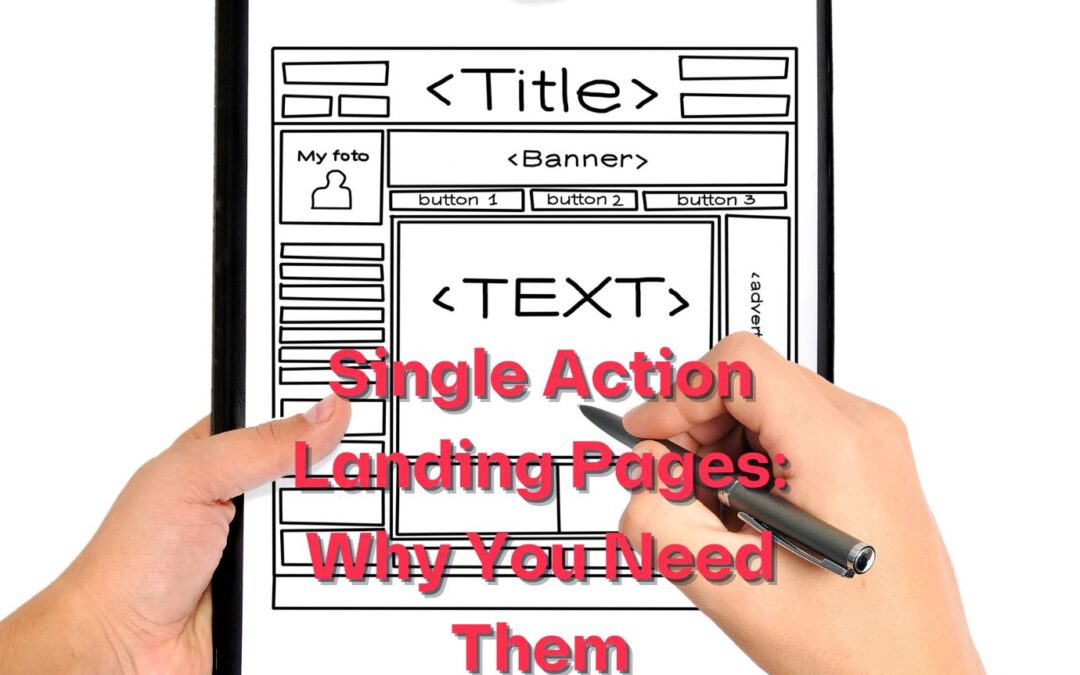In this week’s blog, we will talk about the important role that landing pages play in your marketing and sales strategy.
Most, if not all large-scale and enterprise businesses use landing pages to drive their target leads to their marketing funnel.
A lot of small and medium-sized businesses don’t, and they should.
A landing can bring more leads into your business than a website alone would, and this is because of what landing pages are specifically designed to do.
What Is A Landing Page And What Does It Do?
A landing page is a web page that stands alone and is specifically created for marketing or advertising campaigns in the digital world.
It’s the page where a visitor lands after clicking on a link in an email, Google, Bing, YouTube, Facebook, Instagram, Twitter, or other similar platforms.
Unlike regular web pages, which have multiple purposes and encourage visitors to explore, landing pages are designed with one particular focus, known as a call to action (CTA).
The targeted design of landing pages makes them a highly effective tool for increasing conversion rates in marketing campaigns and reducing the cost of lead or sale acquisition.
Doesn’t Your Website’s Homepage Count?
The homepage has numerous links that may distract visitors from the main call to action. To increase conversions, it is essential to have a dedicated landing page with fewer links.
This way, visitors are not lured away from the main objective. Experienced marketers always opt for a focused landing page as the destination for their traffic.
Although the homepage showcases the brand and its products while providing additional information about the company’s values, it may not necessarily convert visitors into customers.
The landing page, on the other hand, has a specific purpose. It is designed to convert visitors into customers by promoting a single offer through a well-crafted advertisement.
The landing page is instrumental in maximizing the brand’s existing traffic and increasing conversions. That’s why it’s a powerful tool in a marketer’s arsenal.
When Is The Best Time To Use A Landing Page?
A landing page can be the optimal solution in certain situations to boost sales or capture leads.
It may be particularly effective when utilizing PPC advertising, creating a lead magnet, drawing attention to key features, targeting diverse customer segments, or facilitating straightforward testing.
Types Of Landing Pages
1. Lead Generation
A landing page designed for lead generation or capture aims to gather contact information from potential customers through a data form. These pages offer great flexibility, but are typically positioned in the middle of the sales funnel, where customers are considering your products or services and deciding whether to convert or not.
The page offers both an incentive and a call-to-action simultaneously: the incentive being the specific offer you promote to capture leads, and the call-to-action being the information you ask for in your form.
It’s important to strike a balance between these two elements. The offer you present must be valuable enough to persuade customers to provide their details and join your mailing list.
2. Viral Content
The goal of a viral landing page is to increase brand visibility and generate organic interest. While subtle links to a company’s website or other web pages may be included, the main focus is on creating engaging content that informs, entertains, or both.
The key to success is to produce content that is interesting enough to capture readers’ attention and encourage them to share the page on social media. This can take the form of written copy, videos, images, or even interactive games.
3. Click-Through
While a lead-generation page typically includes a form, a click-through page functions as a straightforward intermediary between your ad and the final destination you want to direct your customers towards.
Typically used to link ads with shopping carts, for instance, click-through pages require a concise explanation of the clicked-through item, as well as a clear and actionable call-to-action, featuring a link to the ultimate destination.
The most significant difference between the two is that click-through pages do not require forms to be filled out.
4. Microsite
A microsite is a compact, purpose-built website designed for a specific marketing campaign or sales objective.
While it typically consists of more than one page, it is still considered a type of landing page due to its focused approach towards driving sales and promoting a particular product or service.
Microsites can be paired with online ads or used in conjunction with TV advertising to maximize their effectiveness.
5. Sales Page
Crafting a sales page is no easy feat. Unlike lead generation pages, this page resides at the bottom of the funnel and is tasked with persuading customers to make a purchase.
Therefore, it requires careful execution in both copy and design, and a deep understanding of your customers’ needs and position in the sales journey. Striking the right balance between persuasive messaging and overwhelming sales tactics is crucial to closing the deal.
The length of your sales page should be determined by the complexity of your product and the amount of information required to showcase its value to potential customers.
Regardless of its length, your sales pitch must be compelling and convincing, with the ultimate goal of converting visitors into buyers with a simple click of a button.
Ready To Have Your Landing Page Built For You?
In today’s online world, some people believe that websites and landing pages are no longer relevant.
They are wrong.
Websites and landing pages should be the cornerstone of all of your marketing efforts, or it should be.
HoopJumper will build you a customized landing page with a unique and appealing design focused on getting your ideal client to contact you. It is all about lead capture.
Contact us today and get the landing page that would bring you more ROI like you’ve never seen before.

